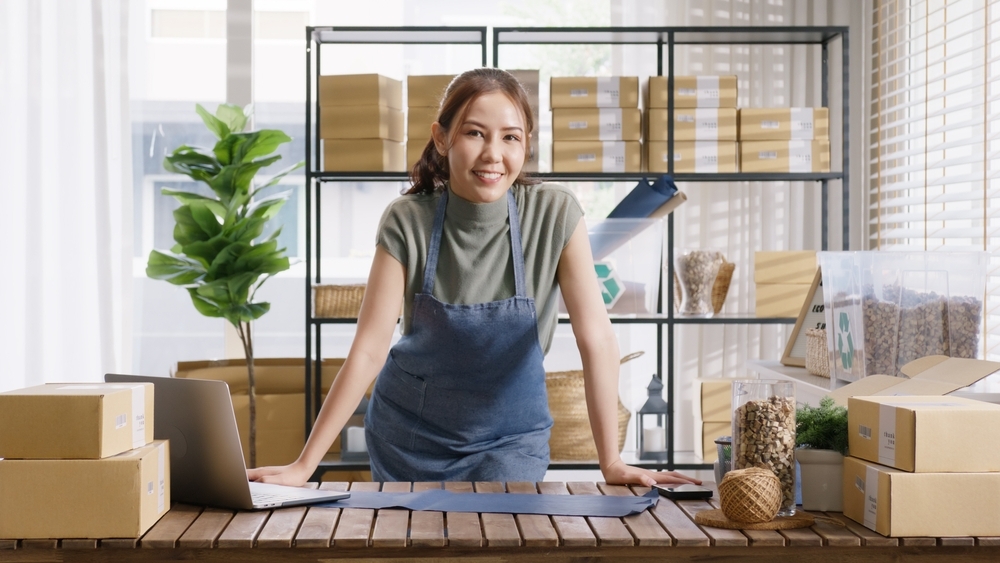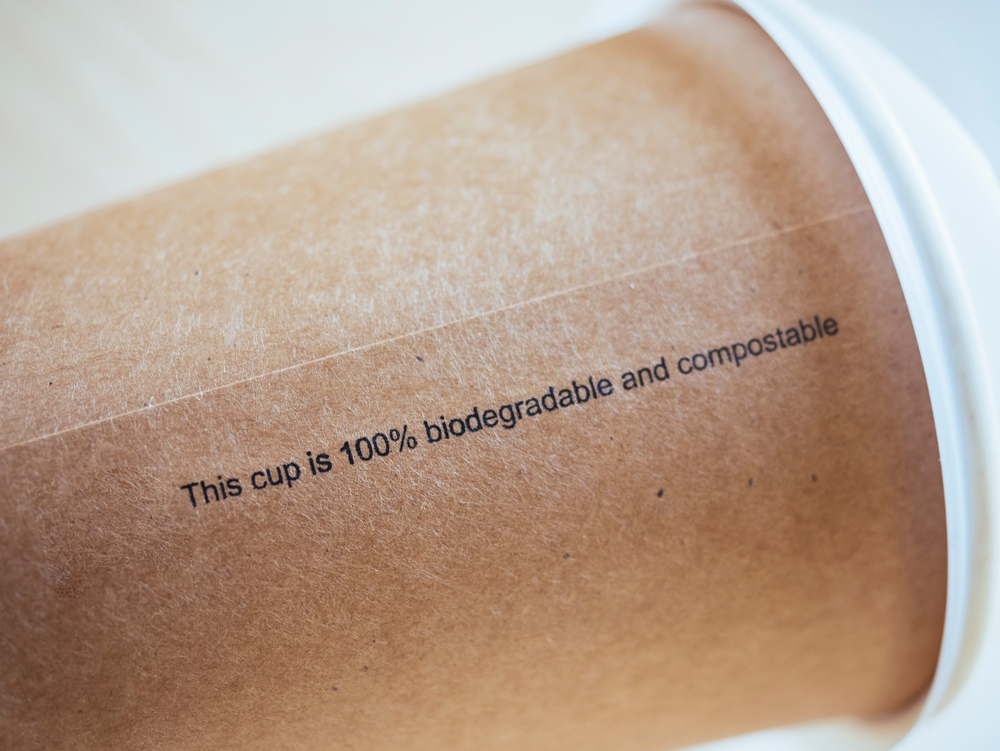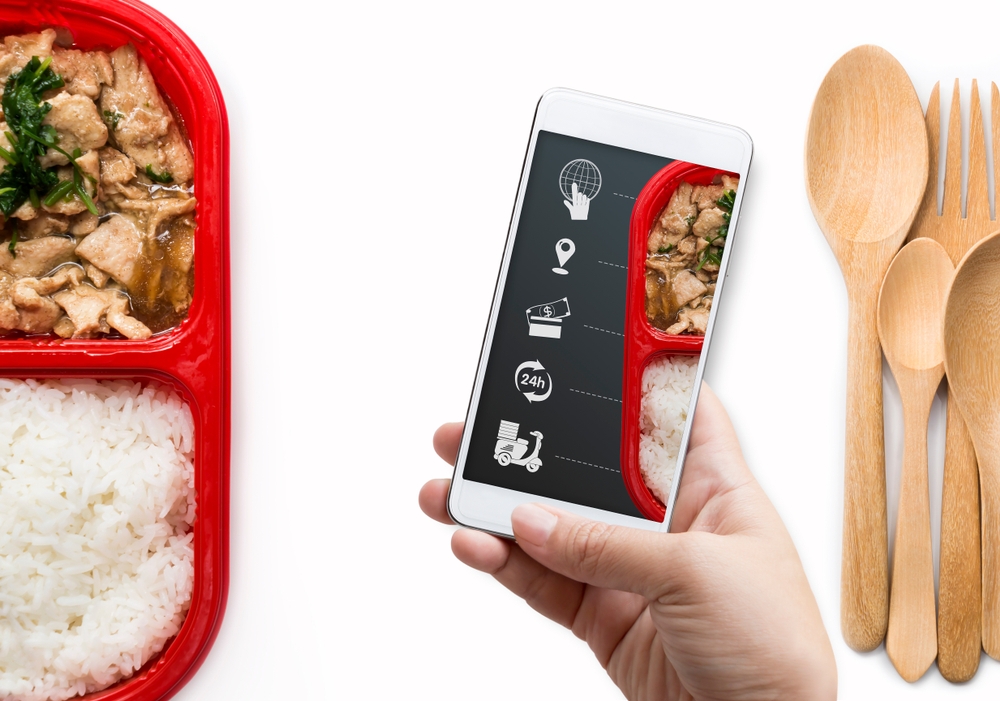Top Trends in Takeaway Packaging Revolutionizing the Food Industry
By Anttoni Taimela · 19. March 2024
Trends in takeaway packaging are gaining attention as the industry pivots towards eco-conscious materials and smart technologies.
What’s driving this momentum, and what can we anticipate for the future of food delivery?
This article dives into the latest trends and developments, from innovative biodegradable options to interactive and personalized packaging solutions.
Without revealing too much, get ready to uncover the significant shifts that are redefining sustainability🌱 and convenience in takeaway packaging.
Eco-Conscious Takeaway Solutions
 Eco-Conscious Takeaway
Eco-Conscious Takeaway
Environmental concerns are no longer a mere afterthought. Indeed, they’re catalyzing regulations aimed at reducing packaging waste and increasing sustainability.
As consumer awareness grows, so does the appetite for eco-friendly foods and packaging solutions.
The takeaway market’s shift towards environmental friendliness is evident in the growth of biodegradable food container wholesales and the use of plastic takeaway containers made from more sustainable materials.
In response to this demand, the food packaging industry is introducing products like biodegradable wood cutlery, kraft paper packaging for burgers and pizzas, and paper-based solutions with heat insulation properties to promote sustainability.
Eco-friendly materials like bagasse, cornstarch, and paper bags, and biobased packaging from bamboo and seaweed are providing biodegradable and compostable alternatives to conventional packaging materials.
Beyond being trends, these eco-conscious solutions represent the future of food packaging.
Biodegradable Containers: A Sustainable Choice
Being toxin and allergen-free, biodegradable materials do not emit harmful chemicals during decomposition, ensuring safety for consumers and the environment.
But how exactly are these sustainable containers made?
They are manufactured using natural fibers from renewable organic resources, which helps to conserve crude oil resources.
Some examples of sustainable containers include:
- Bagasse clamshell food containers, derived from sugarcane byproducts, are sustainable and decompose in 30-90 days in commercial composting facilities.
- Bamboo containers, made from the fast-growing and renewable bamboo plant, are sturdy and biodegradable.
- PLA (polylactic acid) containers, made from cornstarch or sugarcane, are compostable and break down into carbon dioxide and water.
These sustainable containers are a great alternative to traditional plastic containers and help reduce waste and environmental impact.
The sustainability ethos extends to practical uses for agricultural by-products as well. Packing options like:
- rice husk containers contribute to sustainability through natural decomposition
- bamboo, a rapidly renewable resource, is used in food packaging such as plates, bowls, and utensils, making it a biodegradable option that reduces environmental impact
- cornstarch-based containers offer a sustainable and clear alternative to traditional plastics, derived from renewable resources and are biodegradable
Far more than just being eco-friendly, these containers bear witness to human creativity in sustainability.
Compostable Innovations in Packaging
 Compostable Packaging
Compostable Packaging
Compostable packaging technology is another major stride in the journey towards a more sustainable food industry.
These materials are designed to break down completely in a compost setting within a short period, ideally less than 180 days.
Plant-based compostable packaging, like those made from corn, sugar cane, or bamboo, naturally decomposes without leaving toxic residue, aligning with zero-waste objectives.
Adopting biodegradable and compostable materials in the form of compostable packaging aligns with environmental goals by facilitating reduced pollution levels during both production and disposal, benefitting businesses through avoidance of potential fines.
We’re seeing innovative materials such as biodegradable netting made from beech tree pulp for citrus fruits and mushroom-based mycelium packaging showcasing practical applications of compostable solutions in the industry.
These compostable innovations reveal the industry’s continued growth and dedication to sustainability.
Recycling-Friendly Designs
Sustainable packaging isn’t just about using eco-friendly materials; it’s also about ensuring these recyclable materials can be effectively recycled.
Recyclable♻️ packaging often utilizes responsibly sourced materials from managed forests, ensuring the sustainability of packaging products.
These eco friendly packaging designs minimize the depletion of natural resources and maintain an ecological balance during production.
Clear labeling and symbols are used on sustainable packaging to guide consumers and businesses towards proper recycling practices and support recycling efforts.
Recyclable packaging options, such as the 100% recyclable PET, demonstrate an evolution towards lightweight and efficient designs.
Even Hermann’s vegetarian food range has reduced the plastic content in their thermoform packaging by 80%, enhancing environmental sustainability.
More than just being eco-conscious, these recycling-friendly designs play a key role in promoting a recycling culture among consumers.
The Rise of Smart Takeaway Packaging
 smart takeaway packaging
smart takeaway packaging
As we move into an increasingly digital era, the food packaging industry is also riding the wave of technological innovation.
The rise of smart takeaway packaging, one of the latest food packaging trends, and friendly packaging incorporates digital communication channels that significantly improve consumer engagement, provide detailed product information, and enhance safety and traceability.
Technologies such as sensors, QR codes, NFC, and RFID tags offer advanced communication features that contribute to better user experiences and improved product safety.
The growing trend of interactive packaging in the food industry is driven by the ability to create memorable customer experiences, differentiate brands, enhance marketing strategies, and increase customer loyalty.
This blend of technology and packaging is changing the way we interact with our food, one takeaway box at a time.
Interactive Experiences with QR Codes
QR codes on takeaway packaging are more than just squiggly lines; they’re educational tools offering a wealth of product information.
Customers can scan QR codes to access real-time information such as the product’s origins, nutritional content, and serving suggestions.
This provides a comprehensive overview of the product, including its journey from farm to table.
Imagine if your takeaway box could transport you to a different reality.
With augmented reality features accessed via QR codes, this is now possible.
These interactive elements are improving customer engagement and transforming the takeaway experience.
Imagine having a virtual tour guide right in your takeaway box!
Tracking and Traceability Features
Ensuring the safety, fresh, and quality of food products is paramount in the food industry.
Innovations in food packaging sensors facilitate the tracking of the product’s journey, thereby enhancing safety measures and assuring quality throughout its shelf life.
Emerging technologies in smart packaging, such as sensors that provide real-time information on the freshness and safety of food products, contribute to sustainability and informed consumer choices.
Smart packaging with sensors and microchips builds consumer trust by providing transparent and real-time data on the quality and freshness of the products.
This level of transparency not only ensures product safety but also enhances the consumer’s trust in the brand.
It’s as if there’s a personal food inspector right in your kitchen!
Customized and Personalized Packaging Appeal
In a world where consumers crave unique experiences, personalized packaging stands out, critically influencing brand loyalty and conveying a sense of uniqueness and quality.
Technological advancements have streamlined the creation of personalized packaging options more consumers, enabling:
- Custom branding
- Graphics
- Colors
- Fonts
- Shapes
In the realm of food and beverage e-commerce and online ordering, personalized packaging fosters a more personal relationship between brands and customers.
Restaurants and food services are building stronger customer bonds by utilizing personalized packaging features such as personalized notes, messages, and customer-influenced designs.
This goes beyond merely holding food; it’s about forging a personal connection between the brand and the consumer.
Brand Identity Through Design
Packaging is more than just a protective layer; it’s a canvas for showcasing company artwork, logos, and messaging, playing a key role in brand communication.
The psychology of color in packaging influences consumer emotions and fosters brand recognition and association, making color choice crucial for product differentiation.
Typography used on packaging directly impacts consumer perception by conveying a brand’s message and values, contributing to a brand’s uniqueness.
Collaborating with artists and designers can transform packaging into visually striking, collectible pieces, enhancing aesthetic appeal and desirability.
A product’s ability to create packaging can:
- Increase memorability
- Help it to stand out on the shelves
- Reinforce brand identity
- Symbolize the brand’s dedication to quality and detail
The branded packaging is a testament to the quality of the product inside.
This goes beyond mere packaging; it mirrors the brand’s identity and values.
Engaging Customers with Personal Touches
Personal touches on packaging can make all the difference.
Adding a personalized note with the customer’s name on takeaway packaging can create a stronger emotional connection between the customer and the restaurant.
Including personal messages or notes on to-go items makes customers feel appreciated and special, reinforcing positive feelings towards the brand.
A simple hashtag on branded packaging can encourage customers to share their experiences on social media, strengthening the brand’s online presence.
Simple elements like branded stickers on packaging can serve as reminders of the brand and contribute to customer happiness.
These personal touches aim beyond merely making customers feel special; they cultivate a strong emotional connection that boosts brand loyalty.
Minimizing Waste with Minimalistic Packaging
 Minimalistic Packaging
Minimalistic Packaging
In an era where less is more, minimalistic packaging is taking center stage.
This design trend emphasizes simplicity and functionality to effectively convey a brand’s message.
Adoption of minimalist packaging designs helps companies:
- Use fewer materials
- Reduce waste
- Be cost-effective
- Simplify the recycling process
The rising popularity of minimalist packaging reflects growing consumer awareness regarding environmental impact and a shift towards more sustainable consumption habits.
At its core, minimalistic packaging is about shedding the superfluous, honing in on the essentials, and making a substantial impact with less.
This shift can be seen as one of the current packaging trends gaining momentum in the industry in recent years.
Clean Lines and Simple Designs
Minimalist packaging design, characterized by clean lines and ample use of white or negative space, creates a pared-back, polished aesthetic that captures consumer attention.
Adopting a minimalist design as a packaging strategy positions a brand as transparent, honest, organized, and refined, accentuating the primary benefits of the product.
Minimalist packaging, often featuring simple color schemes and limited iconography, focuses on the essential brand message, facilitating immediate consumer comprehension.
The clean and uncluttered design of minimalist packaging enhances the perceived value of the product, making it appear more refreshed and superior.
This goes beyond mere aesthetics; it’s about delivering a crystal-clear and concise message.
Efficiency and Cost-Effectiveness
Minimalist packaging design offers a win-win situation:
- It’s appealing and cost-effective.
- By using fewer resources during production, it offers a cost-effective solution compared to more traditional packaging platforms.
- Cost savings from minimalist packaging extend to shipping expenditures, as less elaborate graphics and fewer materials lead to lighter and more compact packaging.
Simplified design elements in packaging have several benefits:
- They reduce cognitive load for consumers, potentially speeding up the decision-making process and enhancing user experience.
- Minimalist packaging contributes to a more streamlined manufacturing process, thereby reducing production costs.
- This is more than just about cost-saving; it’s about instilling efficiency in every stage of the process.
Convenience Meets Sustainability
 sustainable packaging
sustainable packaging
As the pace of life accelerates, convenience has become a key factor in consumer choices.
Biodegradable takeaway containers are favored during rush hours for their lightweight and easy-to-carry properties.
Clear labeling on takeaway containers enables customers to make swift decisions, an essential factor during peak service times.
Sustainable firm paper cups are designed to be:
- Reliable in holding liquids, ensuring that the contents stay intact and prevent spillage
- Innovations in packaging that offer the perfect blend of convenience and sustainability
- Catering to the time-pressed, eco-conscious consumer of today
Easy-to-Use, Eco-Friendly Containers
Increasing refillability and reusability of containers is a key factor in reducing environmental waste within the packaging industry.
Regulatory incentives such as the EU Plastics Strategy encourage the use of refillable containers, prompting companies to invest in refillable packaging infrastructure.
Different business sectors are adopting refillable solutions, like the Eco-Refill Stations for household products and refillable glass jars for cosmetics, implementing sustainable options and post-industrial recycling materials.
Premium fabric bags represent a luxurious yet eco-friendly reusable packaging option that can be customized with business logos.
These user-friendly, eco-conscious containers are seamlessly integrating sustainability into our daily lives.
Grab-and-Go Packaging Innovations
For the busy consumer, grab-and-go options are a godsend. But convenience doesn’t have to come at the cost of sustainability.
Innovations in packaging are constantly emerging to cater to this demand, marrying convenience with a commitment to the environment.
Whether it’s a salad in a biodegradable container or a coffee in a compostable cup, these grab-and-go packaging innovations are making it easier than ever for consumers to make sustainable choices without compromising on convenience.
This goes beyond merely grabbing a quick bite; it’s about making a swift, positive impact on the environment.
Transparent Packaging: The Clear Choice for Consumers
Transparency isn’t just a buzzword in the corporate world; it’s also making waves in the food packaging industry.
Transparent packaging enhances evaluations of freshness and quality, which can increase consumers’ willingness to pay and purchase intentions.
Visibility of the product through transparent packaging can foster trust, particularly for unfamiliar brands, mediating an expectation of higher quality.
Attractive food items benefit significantly from transparent packaging, leading to better trustworthiness and quality perception than unattractive items.
When food appears appealing, transparent packaging can amplify expected taste evaluation and increase the likelihood of purchase.
This goes beyond the external appearance; it’s about highlighting the internal quality.
Visual Appeal and Product Showcase
Transparent packaging can enhance the visual appeal of food, making the food within more enticing when the contents are visually attractive.
Luxury food brands are using window box designs with transparent windows to differentiate their products by displaying:
- intricate designs
- vibrant colors
- brand values
- origins
Modern window box designs have evolved significantly, employing new printing technologies that allow for the creation of dynamic animations and more intricate visual elements on transparent windows.
This goes beyond merely viewing the product; it’s about crafting a visual treat for the eyes.
Balancing Transparency with Durability
While transparency is appealing, it’s equally important to ensure the durability and sustainability of packaging.
Eco-friendly materials are being developed for transparent packaging to provide sustainability while satisfying customer preferences.
Innovations like UV-resistant films and modified atmosphere packaging have been instrumental in balancing the aesthetic appeal of transparency with the practical requirement of extending the shelf life of food products.
Mushroom packaging, utilizing mycelium, is making strides as an eco-friendly option for transparent packaging due to its durable and lightweight characteristics yet remains compostable.
Kraft paper is another sustainable material for transparent food packaging trends which is 100% FSC-certified, deriving from responsibly managed forests with a sustainable manufacturing process.
This is more than just about transparency; it’s about striking a fine balance between aesthetics and functionality.
Summary
We’ve journeyed through the landscape of food packaging trends, exploring the innovative solutions shaping this industry.
From the eco-conscious approach of biodegradable and compostable materials to the technological advancements of smart packaging, the future of food packaging is dynamic and exciting.
Personalized appeal, minimalistic designs, and the combination of convenience and sustainability are further revolutionizing this industry.
Transparent packaging offers a clear choice, balancing visual appeal with durability.
As we continue to innovate and adapt, one thing is certain: the food packaging industry will continue to evolve, driven by consumer demands and a shared commitment to sustainability.
Frequently Asked Questions
What are the food and beverage packaging trends in 2024?
In 2024, you’ll notice a rise in the use of large quantities of recyclable and compostable packaging, along with an increase in packaging made from recycled materials. Get ready for a more sustainable approach to food and beverage packaging!
What is a trend in packaging?
The trend in packaging is towards sustainability, with a shift away from plastic towards renewable and eco-friendly materials like cardboard and agricultural waste. This will lead to more connected, interactive, and inclusive packaging that supports improved sustainability.
What are some eco-conscious solutions in food packaging?
Go for eco-conscious food packaging solutions like biodegradable containers made from materials like bagasse and cornstarch, compostable packaging using plant-based materials, and recycling-friendly designs to promote proper recycling. It’s a no-brainer, really!
How is smart packaging enhancing consumer engagement?
Smart packaging enhances consumer engagement by providing interactive experiences, detailed product information, and enhanced safety and traceability through technologies like QR codes and tracking features. So, it’s like getting a bonus level in a game, but with your products!

